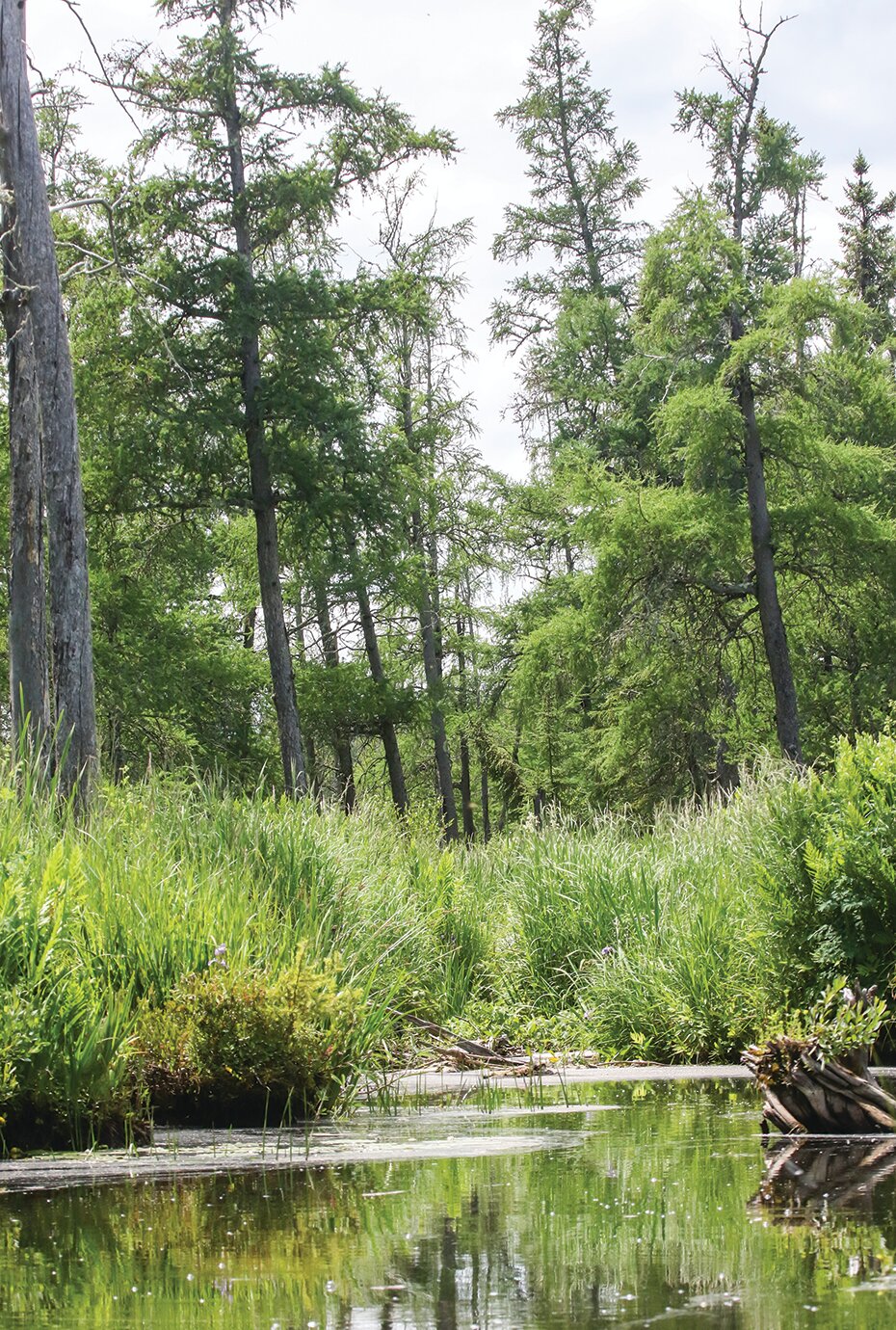Support the Timberjay by making a donation.
DESTINATION HEADWATERS
As I paddled my kayak along the muskeg shoreline of Lost Lake this past weekend, I had a squadron of defenders watching my back. It’s not news to anyone who has set foot outside this year that …
This item is available in full to subscribers.
Attention subscribers
To continue reading, you will need to either log in to your subscriber account, or purchase a new subscription.
If you are a current print subscriber, you can set up a free website account and connect your subscription to it by clicking here.
If you are a digital subscriber with an active, online-only subscription then you already have an account here. Just reset your password if you've not yet logged in to your account on this new site.
Otherwise, click here to view your options for subscribing.
Please log in to continue |
DESTINATION HEADWATERS
As I paddled my kayak along the muskeg shoreline of Lost Lake this past weekend, I had a squadron of defenders watching my back. It’s not news to anyone who has set foot outside this year that the biting bugs have been pretty ferocious. Even on the water, they’ve occasionally beset the unsuspecting fisherman, so as I cruised slowly along the shore, I was happy to have the protection of legions of dragonflies.
More than once, they swooped down from above to snatch away a mosquito or deer fly that was making circles around my head. Our bats may be gone, but we still have our dragons.
For those who aren’t familiar with Lost Lake, it’s a typical peatland lake, mostly round, except for the north and east side, where rocky outcrops give the shoreline a bit more definition. The south and west shores are all floating muskeg, and these stretches always make for an interesting explore. It’s a decent sized lake, more than a mile across which means the wind and the waves can get rolling at times. There’s a constant battle between the muskeg, which naturally tends to engulf its surroundings, and the wind and waves which relentlessly beat it back. The shoreline is lined with tamarack tip-ups, victims of summer thunderstorms or October gales, their intricate roots providing weathered and twisted sculptures worthy of any museum.
In between the sculpted roots is the moss, in a seemingly endless variety of shades of green, punctuated by bog heaths and blue flag irises.
While I was out for a pleasure cruise on this afternoon, I did have a destination in mind. Lost Lake is not only one of the most prominent features of its namesake Lost Lake Swamp, it is also the headwaters of the Little Fork River. The water that makes up the river begins its long journey to the north from the lake’s westernmost tip, which forms a narrow, pointed outlet that slowly flows out into the swamp. The lake’s waters are more nutrient rich than the water found elsewhere in the swamp, and even as the outlet narrows and eventually disappears into the swamp, you can still identify the course of this nascent stream by the larger tamarack that grow along its edges. I’ve always liked that particular spot. It’s calm and protected and it’s a good place to think about the nature of headwaters. I like to let my mind wander here, charting the course of these waters as they slowly ooze to the northwest through the swamp before the Little Fork starts to really take shape as a small stream and finally a river ten miles to the west. From there, of course, it’s on to the Rainy River, Lake of the Woods, the Winnipeg River, to Lake Winnipeg and finally out the Nelson River to Hudson Bay.
I’ve taken that trip a hundred times, although only, to date, in my imagination. For now, that will have to do.
WANT TO EXPLORE LOST LAKE?
DNR naturalist Arika McGraw will lead a free interpretive paddle for kayakers or canoeists on Lost Lake on Saturday, July 8, from 3-5 p.m.
Participants will paddle along the edge of the bog to try to catch a glimpse of some of the plants and animals that call the peatland home.
Advanced registration is required, and the event will be capped at 20 attendees. To register, please email arika.mcgraw@state.mn.us.
Life jackets are required. Dress for the weather. Footwear appropriate for outdoor paddling is recommended.






